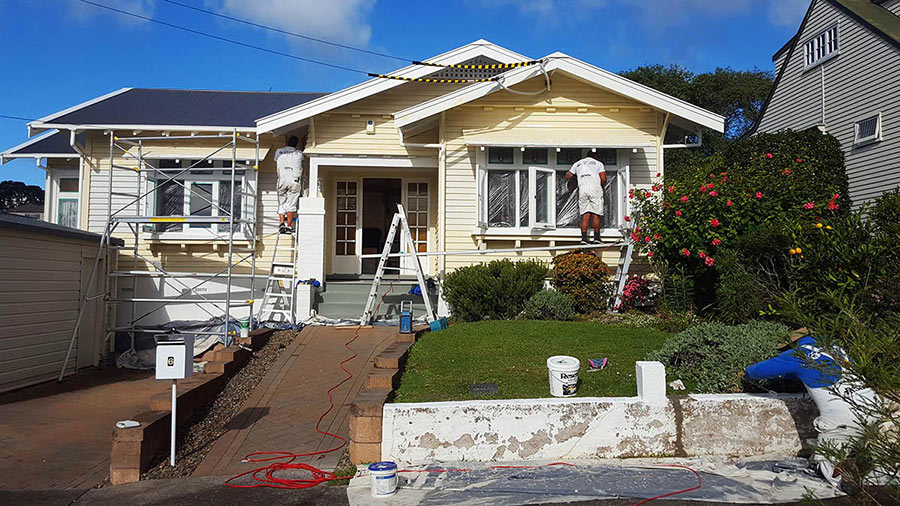
The exterior of your home gets hit from extremes in weather and house movement. These factors together take a toll on paint coatings and can affect the lifespan of a new paint job. Typically these two main factors can cause premature paint failure – environmental factors and the quality of the paint job.
As environmental factors are beyond our control, it’s important to employ a painter who will make sure that the surface to be painted is prepared properly so that the paint film holds its integrity.
Below are the most common reasons for a paint coating failure –
Wet Timber
The timber surface is damp or wet when painted. Make sure that all wooden surfaces have sufficient time to dry out before painting. Preferably give it time to dry on a hot sunny day. However, if the wood is saturated, it will require several sunny days to dry out completely.
Unfinished Timber Exposed To Several Months Of Rain and Sun Before Painting
Continuous rain and sun exposure can degrade an unfinished wood surface; as a result, wood can lose its capacity to hold a paint coating. If unfinished wood has been exposed to rain and sunlight for more than 6 months your painter will wash its surface to remove any soft layers of degraded wood prior to priming and painting.
Painting Timber in Extremely Cold Temperatures
Oil-based paints should only be applied when the temperature is 5°C or above, while the latex paints require a temperature of 10°C and above. Weather conditions should remain constant or above these temperatures for a minimum of 24 hrs after these paints have been applied to allow them to dry off completely.
Bad Preparation
We come across untold paint jobs that have been prepared badly by dodgy painters. The result is paint film that has started to flake, crack, blister and bubble. You’ve most probably heard the saying “Painting is 80% preparation, 20% painting”. Correct paint stripping, sanding, filling, priming is needed for a job that will last the test of time. Citywide Decorators make sure we spend the time needed in preparation so that you don’t have problems down the line.
Painting Timber in Humid Weather
The correct procedure for water-based paints to cure is to allow the water to evaporate faster than the remaining solvents. It is only after the water has evaporated completely that the paint film shrinks into its final shape. Finally, after the solvents evaporate, the chemical reactions in the paint cause it to form a hard material. But water fails to evaporate in humid weather conditions and this can cause the solvents to evaporate before the water. This can cause the paint to cure with moisture trapped inside – the result is bubbling and blistering causing damage to the paint film.
Call Citywide Decorators to have peace of mind with your next painting project. 0800 766 344
